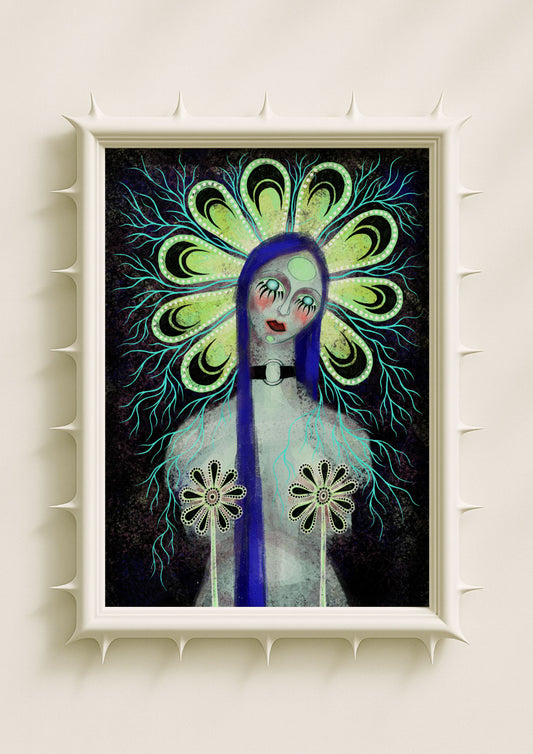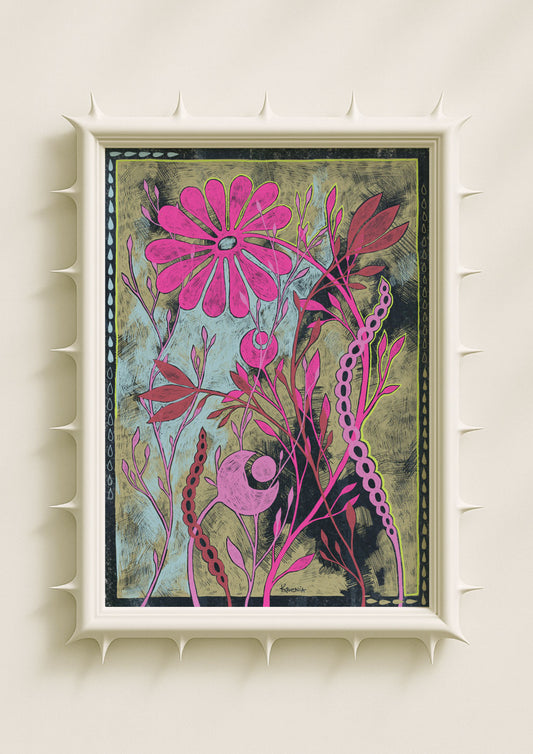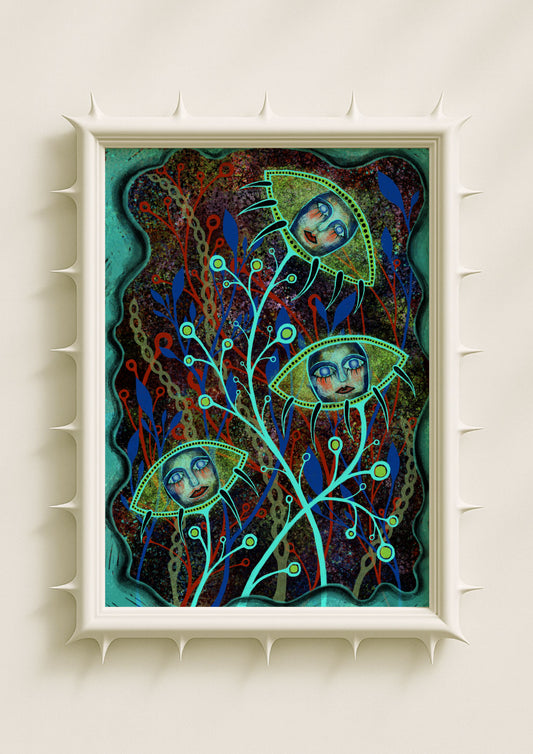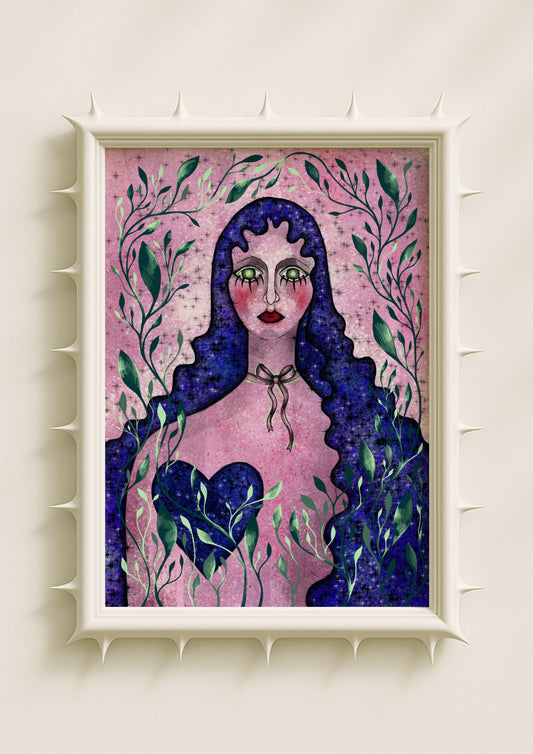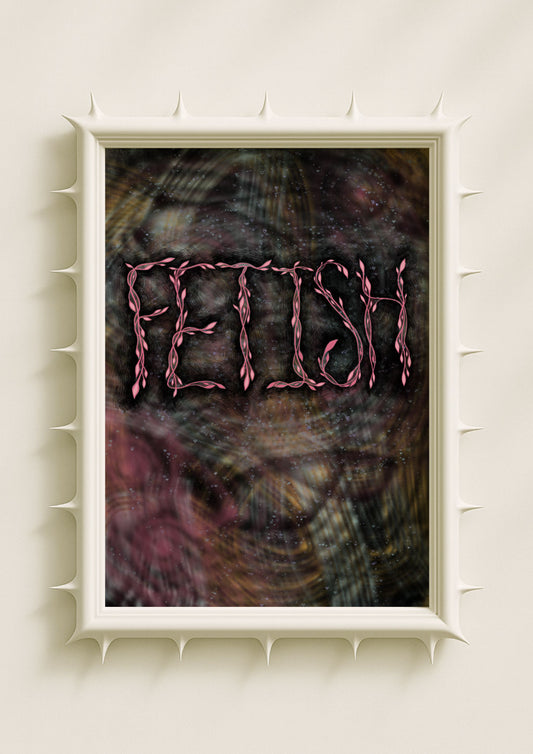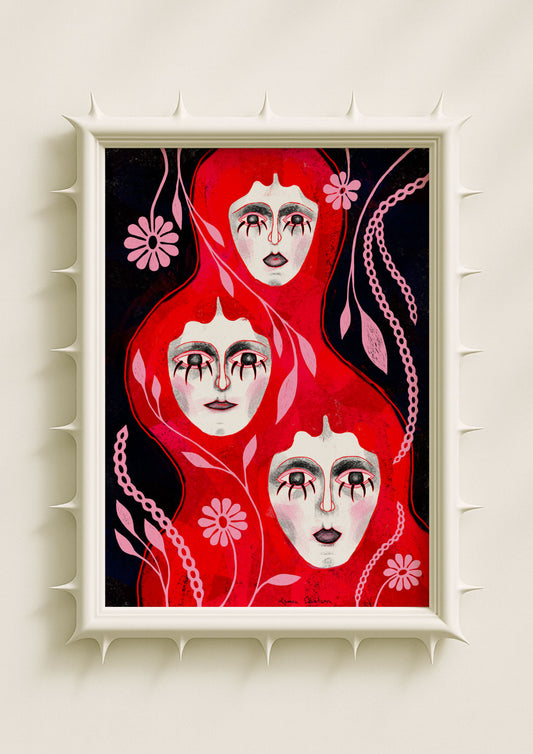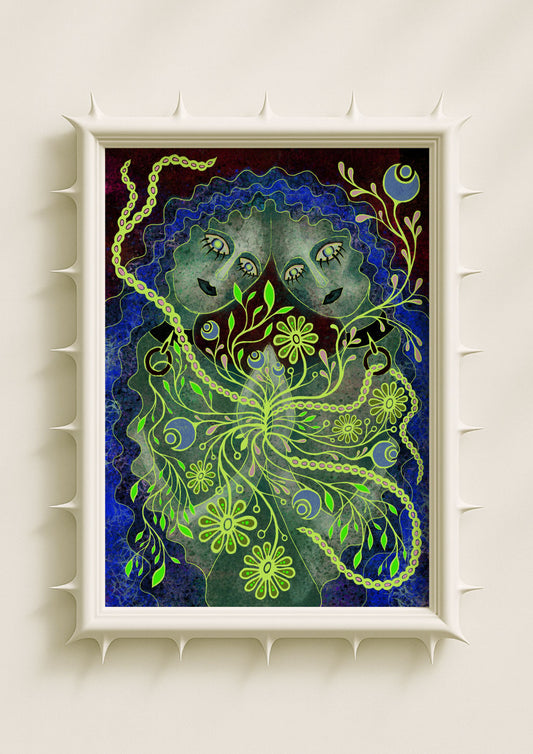A Visual Language Suspended Between Worlds
Dreamcore exists in the space where sleep and waking meet, in that quiet moment when the mind tries to hold on to something soft before it fades. When I create dreamcore wall art, I’m drawn to that borderland feeling — the sense of floating, of being half inside a memory and half inside a vision that never truly happened. Dreamcore posters thrive on this slight disorientation. They aren’t meant to recreate dreams literally. They trace the emotional residue that dreams leave behind: a colour that feels remembered, a face that feels familiar without belonging to anyone real, a flower shape that looks as if it grew out of a mood rather than the earth.
Soft Surrealism as Emotional Memory
In my work, the dreamlike atmosphere comes from the way elements behave. Flowers drift instead of growing. Shadows seem to pulse. Faces appear layered, as if the figure were remembering herself in several versions at once. This softness isn’t an escape from reality; it’s a psychological space where feelings rise without structure. Dreamcore wall art works this way because dreams tend to reflect emotion more honestly than waking thought. They bend, merge, exaggerate and whisper — all in the service of revealing something that might remain hidden in daylight.

Colour as Mood, Not Description
Colour carries huge emotional weight in dreamcore imagery. I rarely choose tones because they represent something literal. Instead, I select them the way you remember a dream: through sensation. A muted lilac might feel like the tenderness of something unresolved. A deep blue might echo the feeling of drifting underwater. A faded coral might recall the warmth of someone’s presence. In dreamcore posters, colour becomes the emotional anchor of the composition. It guides the viewer through the atmosphere rather than through a narrative.
Faces That Don’t Explain Themselves
I often draw faces that seem paused between emotions, with large eyes, softened edges and a stillness that feels almost suspended. They don’t perform for the viewer. They don’t resolve their expression. They simply exist in that in-between state — the quietness before a thought forms. Dreamcore portrait posters resonate because they create a kind of emotional permission. They allow ambiguity. They allow the viewer to project their own feeling into that open, unspoken expression. That’s something realism rarely offers so directly.

Botanicals That Behave Like Thoughts
Much of my dreamcore work includes botanicals that bend in strange directions, blur at the edges or grow from unexpected places. These plants are not illustrations of nature. They’re visual metaphors for inner movement: fears spreading, desires unfurling, memories returning without invitation. In dreamcore, botany becomes psychological. A petal may tremble like an unfinished sentence. A vine may spiral as if following the shape of an emotion. These elements create symbolic wall art that feels alive and reactive, even within a still frame.
The Emotional Weight of Soft Distortion
Dreamcore relies heavily on gentle distortion. A stretched silhouette, a floating hand, a shadow that doesn’t match the body — these quiet shifts in reality create a sense of dissonance that is never threatening. They feel like a truth trying to reveal itself through metaphor. The mind accepts these distortions the same way it accepts the logic of dreams. This is why dreamcore wall art feels calming even when it’s strange. It mirrors the way we process feelings privately, without structure or explanation.

Dreamcore in Contemporary Interiors
In a home, dreamcore posters introduce an atmosphere that is calm but emotionally charged. They soften minimalist spaces, giving them a sense of depth. They bring introspection to modern rooms and add a poetic rhythm to eclectic ones. Dreamcore art prints work particularly well in bedrooms, studios and quiet corners — places meant for slowing down, thinking, drifting. They don’t demand attention. They invite presence. They create a mood where imagination can rest.
A Way of Feeling, Not Just a Style
Ultimately, the psychology of dreamcore has less to do with visual trends and more to do with how it makes us feel. It reflects the part of the self that lives between clarity and mystery, the part that processes life through symbolism rather than logic. Dreamcore is not about reproducing dreams. It’s about touching the emotional undercurrent that dreams reveal. And when these surreal artworks hang on a wall, they bring that undercurrent into the room — gently, quietly, like a breath you didn’t realise you were holding.
